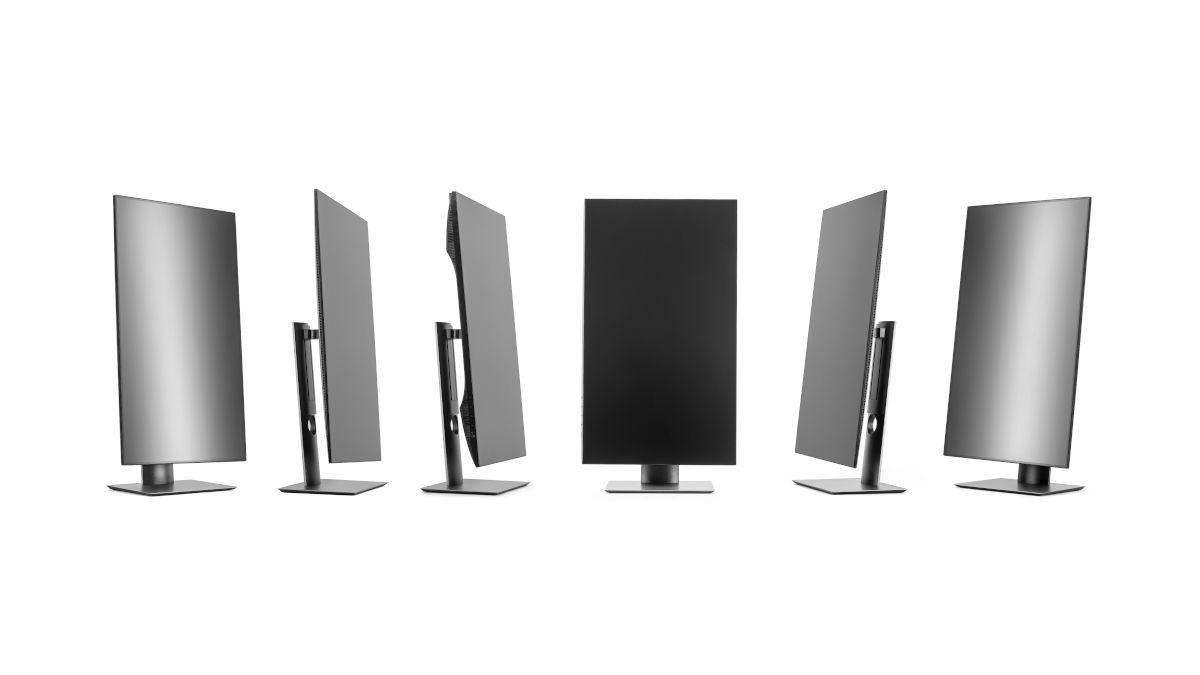Quick Links
Everyone is used to landscape screen orientations on desktop computers, but on smartphones and tablets, we switch between vertical and horizontal orientations with gay abandon. So, why not enjoy that same flexibility on your desktop computer with portrait mode monitors?
1. Using Vertical Instead of Horizontal Space
One excellent reason to use a vertical monitor is that you better use your desk space. While you have the same total amount of screen real estate, the monitor's footprint is much smaller. You can put several vertical monitors next to each other for a truly massive amount of space.
2. Better Document Editing
If you edit word processor documents or PDFs that use a portrait page orientation, then using your monitor in portrait mode is significantly more comfortable than in landscape mode. Take it from folks who write and edit thousands and thousands of pages for a living, a single page blown up to fill a portrait mode screen is very easy on the eyes!
3. More Efficient Portrait Photo Editing
The same principle for editing documents applies to images that are in portrait orientation. By adjusting your monitor to match the framing of the image, you get to see the largest rendition of the full image possible on that screen.
4. Smarter Coding
One of the most common use cases for vertical monitors is in the world of programming. Software code tends to have relatively short lines, but getting as many lines as possible on-screen can help the coder see problems that scrolling up and down would miss. It's common to see a programmer with one vertical and one landscape monitor.
5. Full-Screen Vertical Videos
Despite how much people complained about them when they first became common, vertical videos are now a fact of life. They're no problem when viewed on a smartphone, but on a landscape monitor, you end up with massive black bars on either side of the video.
If you rotate your desk monitor into its vertical mode, you can see the video in all its glory with no black bars at all!
6. Improved Vertical Arcade Games
While modern games are generally designed to work in landscape orientation, many classic arcade games or certain types of games such as pinball simulators, work best in vertical mode.
If you love vertical "schmup" games, for example, then having a monitor in portrait mode is the next best thing to actually being in an arcade.
7. Landscape Window Stacking
A 4K screen has the same amount of pixels as four 1080p monitors. If you turned that monitor into portrait mode, you'd have the equivalent of multiple landscape monitors stacked vertically without any bezels in between them.
You could have four or five browser windows or other landscape-friendly apps stacked on one monitor, letting you keep an eye on many apps simultaneously. It's great as a second screen solution for game streamers, stacking apps like Discord, OBS, Twitch, or your system statistics.
How To Get in on The Vertical Monitor Action
If you're excited to get into the vertical monitor club, the good news is that it's not hard or expensive to do. You have two options when it comes to the monitor itself. First, you can buy a new monitor with a mount supporting rotating between the two orientations. This is a common feature in professional and business monitors made by companies like Dell, whose Ultrasharp monitors usually have flexible stand options.

Dell UltraSharp U2720Q
This 27-inch monitor gets you 4k resolution, HDR support, and simple USB-C connectivity. It's a great monitor for most uses!
Secondly, you can convert your existing monitor to one capable of vertical orientation. As long as your existing monitor has a VESA mount on the back, you can purchase a monitor stand or mount that allows for rotation.
That takes care of the physical rotation, but of course the operating system doesn't know the screen has been changed, with the exception of special monitors that can signal to the OS that the orientation has changed. In Windows, it's easy to rotate the screen orientation, and there's even a handy keyboard shortcut, so changing in a second or two is entirely possible!


